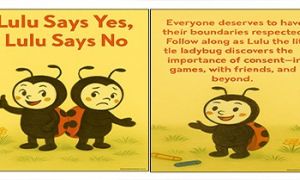In early childhood education, hiring the right educator isn’t just about filling a vacancy, it’s about safeguarding children’s well-being, nurturing relational culture, and protecting the integrity of your service. A qualification alone doesn’t guarantee competence. What matters is how an educator shows up: emotionally attuned, ethically grounded, and ready to co-create safety and joy with children, families, and colleagues. Here’s a practical, sector-savvy approach to identifying truly capable educators before they enter your team.
Go Beyond the Resume
A Certificate III, Diploma, or even a degree doesn’t reveal how an educator will respond in moments of emotional intensity or ethical complexity.
Ask deeper questions:
- “What motivated you to work with children?”
- “How do you build trust with families from diverse backgrounds?”
- “Tell me about a time you felt emotionally challenged in your role. How did you respond?”
- “What does relational pedagogy mean to you in practice?”
What to look for:
Authenticity, emotional intelligence, reflective capacity, and a values-aligned voice—not rehearsed answers or jargon.
Use Scenario-Based Questions
Pose real-world dilemmas that test judgment, not just policy recall.
Examples:
- “What would you do if a child disclosed something concerning but asked you not to tell anyone?”
- “How would you respond if a colleague spoke harshly to a toddler in front of you?”
- “Describe a time you adapted your approach for a child with sensory sensitivities or trauma history.”
- “A parent arrives visibly distressed and begins venting about their child’s behavior. What do you do?”
- “You notice a child withdrawing during group time. How do you respond?”
- “You’re asked to document a child’s learning, but you feel the moment was emotionally significant rather than skill-based. How would you write it?”
What you’re assessing:
Responsiveness, safeguarding instincts, emotional attunement, and ethical clarity.
Observe a Practical Trial or Play Session
Invite shortlisted candidates to spend time in the room (with supervision). This is where emotional intelligence becomes visible.
Watch how they:
- Enter the space and attune to children’s emotional states
- Respond to conflict, distress, or overstimulation
- Interact with team members—do they listen, adapt, and collaborate?
- Use tone, body language, and presence to create safety
Red flags:
Over-directiveness, lack of warmth, ignoring emotional cues, or defaulting to control-based strategies.
Use a Values-Aligned Rubric
Create a simple checklist or rubric based on your service philosophy and the National Quality Standard (NQS).
Include indicators like:
- Respectful, attuned interactions with children and adults
- Cultural responsiveness and inclusive language
- Initiative, curiosity, and playfulness
- Emotional regulation under pressure
- Ability to reflect and repair after misattunement
- Commitment to trauma-informed practice and child safety
Tip: Invite room leaders to co-design the rubric so it reflects lived practice, not just policy.
Conduct Deep Reference Checks
Go beyond surface-level reliability. Ask questions that reveal emotional and relational competence.
Ask:
- “Would you rehire them?”
- “How did they handle feedback or conflict?”
- “What kind of relationships did they build with children and families?”
- “Can you recall a moment where they showed emotional intelligence or relational leadership?”
- “Were there any concerns about their ability to respond to distress or disclosures?”
Listen for:
Stories of warmth, adaptability, and ethical clarity—not just punctuality or task completion.
Trust Your Team’s Intuition
Involve room leaders, mentors, or wellbeing champions in the hiring process. Emotional radar matters.
If something feels off—pause. Even if the paperwork looks perfect, attunement gaps can erode team culture and child safety.
Tip: After interviews or trials, ask your team:
- “Did you feel emotionally safe around them?”
- “Would you feel confident leaving them with a child in distress?”
- “Did they listen and respond, or just perform?”
Hiring is not just recruitment; it’s relational safeguarding. By assessing emotional intelligence, responsiveness, and relational values before hiring, services protect children, uplift teams, and strengthen culture. The best educators aren’t just qualified they’re attuned, reflective, and ready to co-create safety and joy.







 As an Educator in Australia, your pay rate falls under the Children’s Services Award 2010. This award states the minimum amount that an employer can
As an Educator in Australia, your pay rate falls under the Children’s Services Award 2010. This award states the minimum amount that an employer can When working as a qualified Early Childhood Teacher (with a university degree) within a service, your rate of pay will come from the Educational Services
When working as a qualified Early Childhood Teacher (with a university degree) within a service, your rate of pay will come from the Educational Services When working as a Diploma Qualified Educator your pay rate is from the Children's Services Award 2010. This Award states your minimum rate of pay
When working as a Diploma Qualified Educator your pay rate is from the Children's Services Award 2010. This Award states your minimum rate of pay When working as a Cert 3 Qualified Educator, your pay rate is from the Children's Services Award 2010. This Award states your minimum rate of
When working as a Cert 3 Qualified Educator, your pay rate is from the Children's Services Award 2010. This Award states your minimum rate of Educational Leaders play a crucial role in their early childhood service by ensuring that the educational program aligns with best practices and supports the holistic
Educational Leaders play a crucial role in their early childhood service by ensuring that the educational program aligns with best practices and supports the holistic In early childhood education and care, ratios are more than a technicality—they are a frontline safeguard. Every child deserves responsive supervision, emotional connection, and developmental
In early childhood education and care, ratios are more than a technicality—they are a frontline safeguard. Every child deserves responsive supervision, emotional connection, and developmental With the new national child safety reforms kicking in on 1 September 2025, early childhood services like yours have a real opportunity to lead the
With the new national child safety reforms kicking in on 1 September 2025, early childhood services like yours have a real opportunity to lead the Here’s a comprehensive Mobile Phone and Smart Watch Policy tailored for early childhood education and care (ECEC) services in Australia, aligned with the latest 2025
Here’s a comprehensive Mobile Phone and Smart Watch Policy tailored for early childhood education and care (ECEC) services in Australia, aligned with the latest 2025 The Sea of Fish Challenge is a national initiative that invites children, educators, families, and communities to create and display fish artworks as a symbol
The Sea of Fish Challenge is a national initiative that invites children, educators, families, and communities to create and display fish artworks as a symbol Across the early childhood education and care sector, educators are sounding the alarm: current staffing ratios are insufficient to deliver safe, meaningful, and developmentally appropriate
Across the early childhood education and care sector, educators are sounding the alarm: current staffing ratios are insufficient to deliver safe, meaningful, and developmentally appropriate


